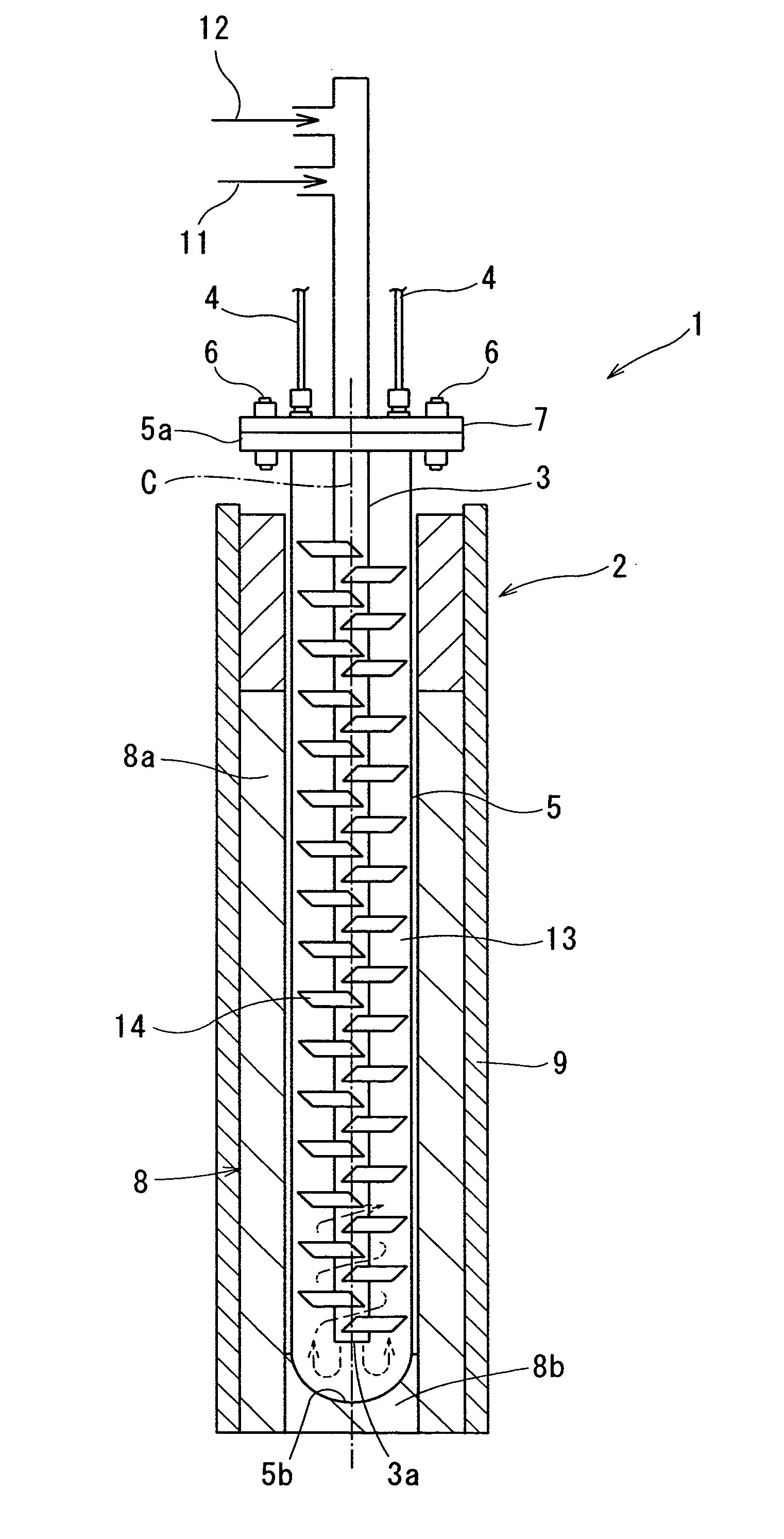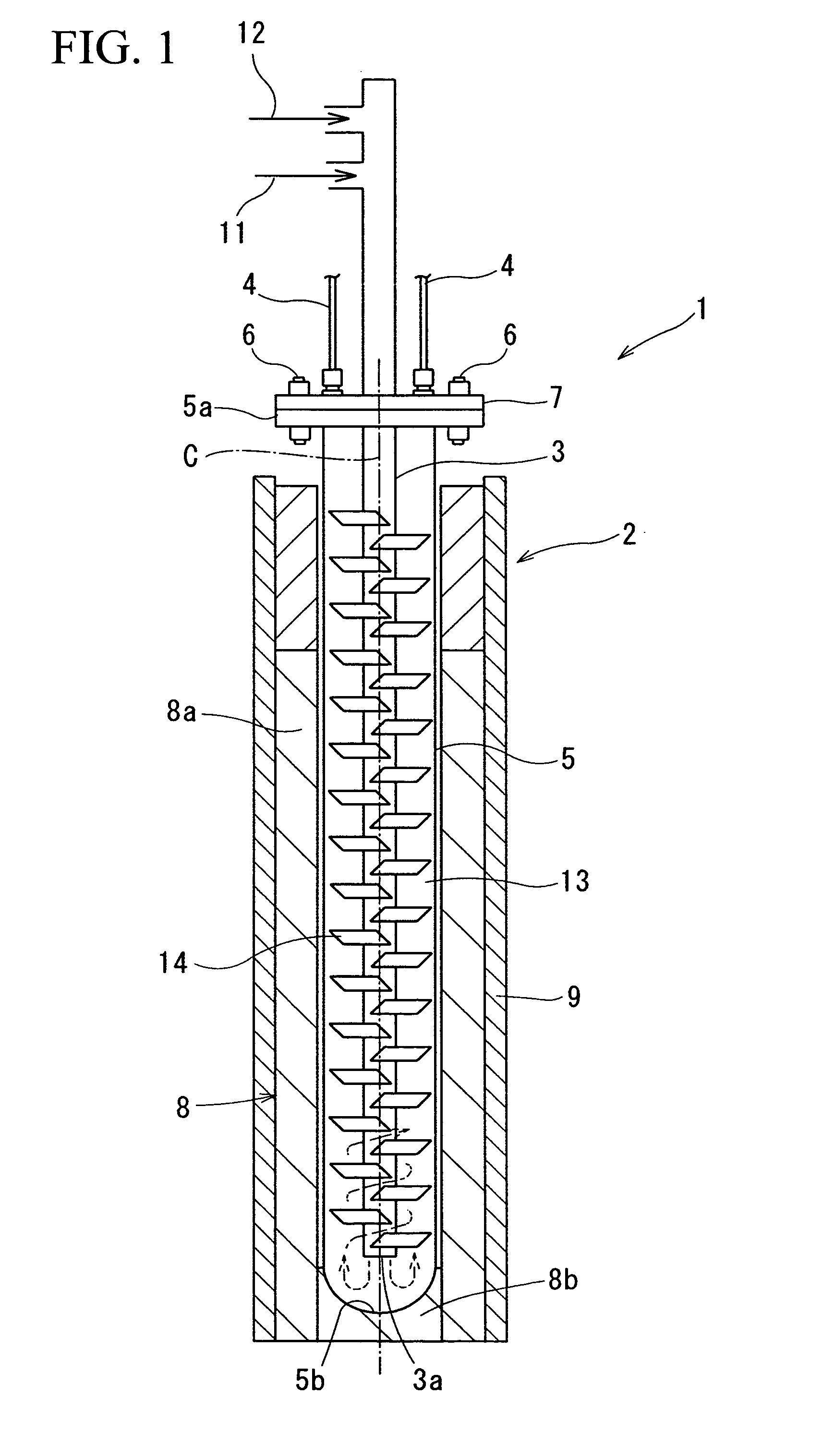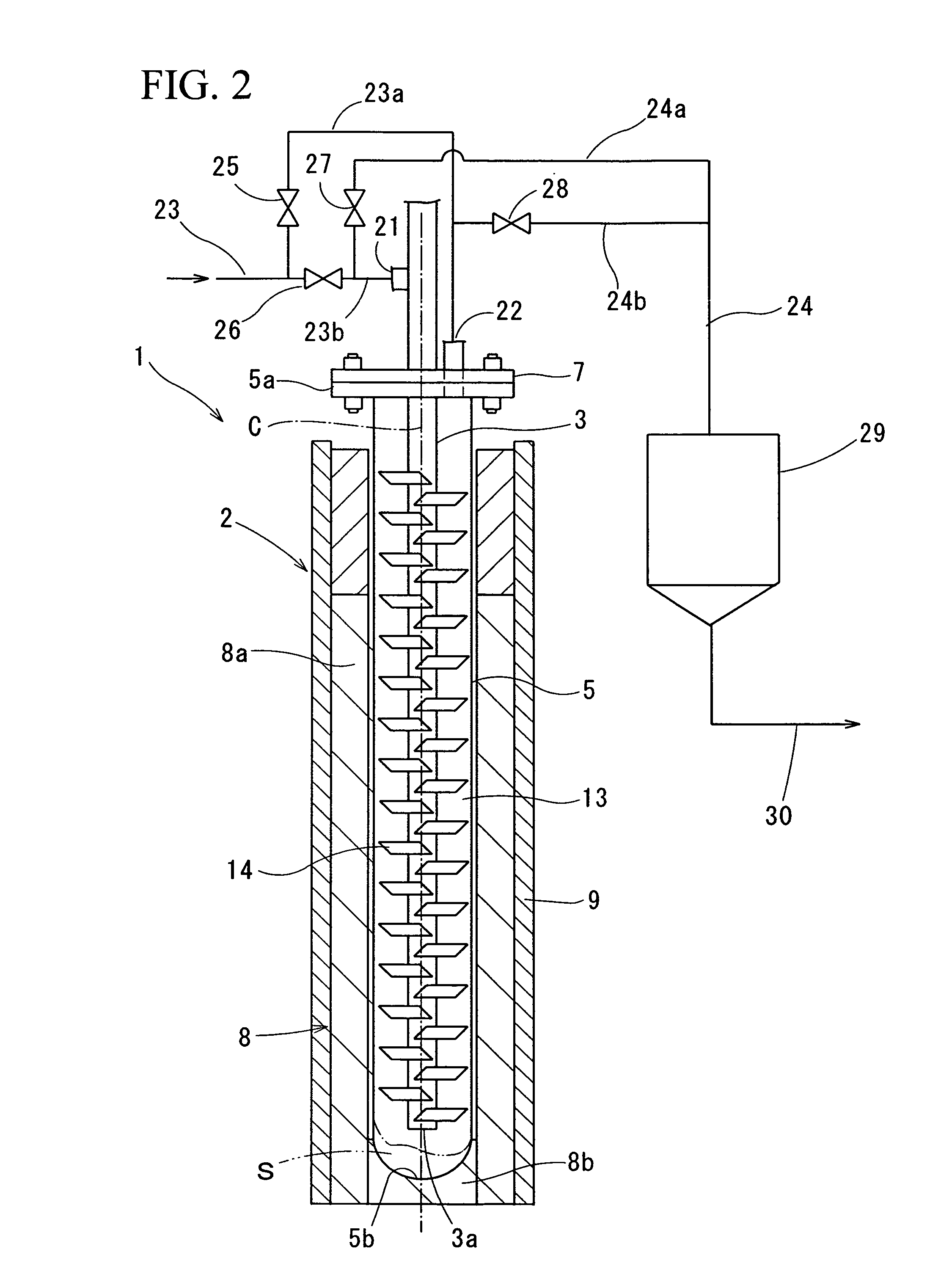Apparatus for producing trichlorosilane and method for producing trichlorosilane
- Summary
- Abstract
- Description
- Claims
- Application Information
AI Technical Summary
Benefits of technology
Problems solved by technology
Method used
Image
Examples
first embodiment
[0035]FIGS. 1 to 3B illustrate an apparatus for producing TCS according to a The apparatus for producing trichlorosilane 1 includes a cylindrical decomposing furnace 2 provided along in a longitudinal direction of the decomposing furnace, a raw material supplying tube 3 which is inserted from above on the decomposing furnace 2 to the inner bottom portion along the center axis C of the decomposing furnace 2, and a gas discharge tube 4 for discharging reaction gas from the top portion of the decomposing furnace 2.
[0036]The decomposing furnace 2 includes a furnace main body 5 which is bottomed-cylindrical and has a top flange 5a, an end plate 7 which is joined to the top flange 5a of the furnace main body 5 with bolts 6 which can be detached, and a heating unit 8 heating the inside of the furnace main body 5 from the periphery thereof. In addition, an inner bottom surface 5b of the furnace main body 5 is formed as a spherical concave surface.
[0037]The heating unit 8 includes a body-se...
second embodiment
[0064]FIG. 5 illustrates an apparatus for producing TCS according to the present invention.
[0065]In the apparatus for producing trichlorosilane 1 according to the first embodiment, the two gas discharge tubes 4 are connected to the end plate 7 of the decomposing furnace 2. However, in the apparatus for producing trichlorosilane 41 according to the second embodiment, a gas discharge tube 42 is formed as a cylinder which a diameter of the cylinder is larger than the raw material supplying tube 3 to surround the section of the raw material supplying tube 3 which protrudes upward from the decomposing furnace 2 such that the raw material supplying tube 3 and the gas discharge tube 42 are provided in a double-tube structure. In addition, the double-tube section extends upward from the decomposing furnace 2 by a predetermined length, and in the double-tube section, heat exchange occurs between the raw material fluid passing through the raw material supplying tube 3 and the reaction gas pas...
third embodiment
[0067]FIG. 6 illustrates an apparatus for producing TCS according to the present invention.
[0068]The apparatus for producing trichlorosilane 51 is provided with an agitating member 54 formed by fixing a second fin 53 to the periphery of a core bar 52 in the raw material supplying tube 3. In this case, the raw material supplying tube 3 is provided with the same preheating unit 43 as in the second embodiment, the agitating member 54 has a length extending downward from the preheating unit 43 to the vicinity of the inner bottom portion of the furnace main body 5, and the front end portion thereof protrudes from the lower end opening 3a of the raw material supplying tube 3.
[0069]In this case, the upper end of the agitating member 54 is supported by the wall of the raw material supplying tube 3, and by removing the support to the upper end, the agitating member 54 can be moved vertically or rotated. Other configurations are the same as those of the first embodiment, and same elements are...
PUM
| Property | Measurement | Unit |
|---|---|---|
| Temperature | aaaaa | aaaaa |
| Boiling point | aaaaa | aaaaa |
Abstract
Description
Claims
Application Information
 Login to View More
Login to View More - R&D
- Intellectual Property
- Life Sciences
- Materials
- Tech Scout
- Unparalleled Data Quality
- Higher Quality Content
- 60% Fewer Hallucinations
Browse by: Latest US Patents, China's latest patents, Technical Efficacy Thesaurus, Application Domain, Technology Topic, Popular Technical Reports.
© 2025 PatSnap. All rights reserved.Legal|Privacy policy|Modern Slavery Act Transparency Statement|Sitemap|About US| Contact US: help@patsnap.com



